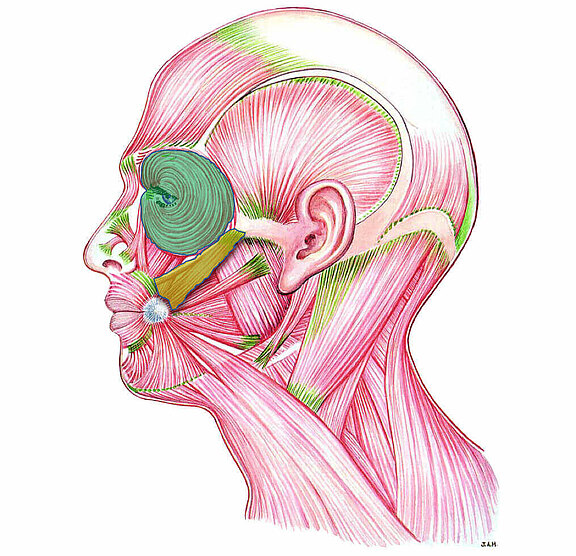The aim of reconstructive surgery is to improve the quality of life of affected patients both functionally and in terms of a symmetrical appearance. Dynamic reconstruction of facial palsy and Bell's palsy: a pronounced irreversible facial paresis is an indication for surgical reconstruction, also called 'facial reanimation'. Facial reanimation procedures include nerve transfers of the n. hypoglossus, the n. massetericus, free functional muscle transplants and cross-face nerve grafting (CFNG).
The focus of the restoration is above all on the eye area and the mouth area. The aim of the restoration is to bring the paralyzed, flaccid half of the face back into line with the healthy half. In addition to aesthetic shape correction and symmetry adjustment, this includes significant functional improvements for the patients. Among other things, tightening operations, eyelid corrections, implantations of gold/platinum weights to weight the upper eyelid, muscular restoration of the eye closure, introduction of autologous tissue to improve nasal breathing, nerve rearrangements, free tissue transplants and static suspension plastics (tissue regeneration of hanging facial parts with autologous tissue) are offered. The operations are performed under the greatest possible protection of the tissue under magnifying glasses with high magnification and/or a high-performance microscope. All operation scars can be placed inconspicuously and are sutured under the high aesthetic standards of plastic surgery and heal as a rule so well that they remain as inconspicuous as possible. For reconstruction of the face, for example, a very similar incision is usually used as is usual with aesthetic facelifts. The sutures are made of the finest, self-dissolving sutures. Thanks to gentle, modern surgical procedures, the patient only has to expect moderate postoperative wound pain, which can be controlled very well with painkillers.
